In this article, we discuss the history of black tea, from its origins in China to its current popularity worldwide.
Black tea is one of the most popular types of tea in the world, and it has a rich and fascinating history that dates back centuries. If you’re a tea lover, you might be curious about the origins of this delicious beverage and how it became such an important part of cultures worldwide.
Black tea is made from the leaves of the Camellia sinensis plant, which is native to Asia. The leaves are picked, withered, rolled, and then oxidized before they are dried. This process gives black tea its distinctive flavor and dark color. While black tea is now enjoyed worldwide, it was first consumed in China and later spread to other countries like India, Sri Lanka, and Kenya.
Please keep reading to learn about the history of black tea and how it spread worldwide.
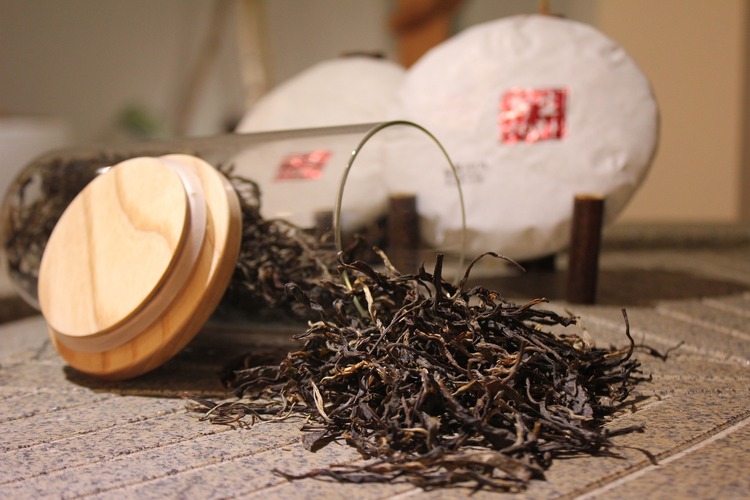
History of Black Tea
Let me mention we keep learning about the origins of this beloved beverage as experts keep discovering physical evidence of its consumption. Our understanding of the origins of black tea can change at any moment.
Also, as with any popular ingredients, there are a lot of myths and stories surrounding the origins of tea. There is plenty of information about the origin of tea (which was initially consumed as green tea) but not that much about black tea (it seems there is no consensus on how it originated). We are providing a timeline below to the best of our ability.
Origins of Tea
Tea has a rich and ancient history that dates back thousands of years, with its origins deeply rooted in China. Legend has it that the discovery of tea occurred around 2737 BC during the reign of Emperor Shen Nong. According to the story, while boiling water under a tree, a few leaves from the tree drifted into the pot and infused the water with a delightful aroma. Intrigued, the emperor tasted the concoction and found it refreshing and invigorating.
The cultivation and consumption of tea evolved significantly during the Han Dynasty (206 BC to 220 AD). Tea plants were cultivated, and tea preparation techniques began to develop. Initially, tea leaves were processed and consumed as green tea, which involved minimal oxidation.
During its early stages, tea was primarily consumed for its medicinal properties. Traditional Chinese medicine recognized the potential health benefits of tea, attributing properties such as aiding digestion, promoting mental alertness, and improving overall well-being to its consumption.
Origins of Black Tea
Some sources indicate that the transformation from green tea to black tea occurred due to experimentation and innovation by tea artisans during the Han dynasty.
Other sources trace the origins of black tea to the Ming Dynasty, which ruled China from 1368 to 1644. In this case, it is believed that black tea was accidentally discovered when some leaves were left to wither and oxidize for an extended period. Others assert tea artisans developed the entire oxidation process while trying to preserve tea for an extended period (since green tea loses its freshness in about a year).
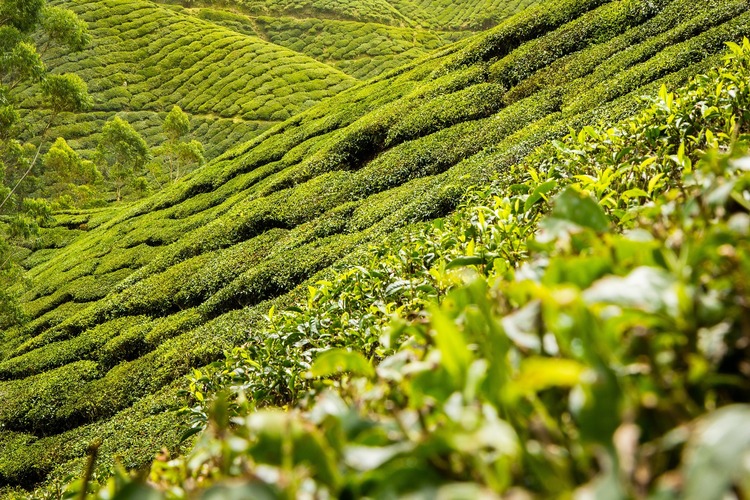
Trade Routes and Introduction to Europe
Portuguese and Dutch Involvement in the Tea Trade
The exploration and expansion of trade routes during the 16th century opened up new possibilities for the tea trade. The Portuguese were among the first European powers to establish direct contact with China and significantly introduced tea to the West. They were intrigued by the exotic beverage and recognized its potential. Therefore, they actively engaged in the tea trade, bringing small quantities back to Europe.
The Dutch East India Company also ventured into the tea trade after the Portuguese. They established trade relationships with Chinese merchants and began importing more significant quantities of tea to satisfy the growing European demand. The Dutch monopoly over the tea trade allowed them to control prices and distribution, making tea a luxury commodity accessible to a privileged few.
Exportation of Black Tea from China to Europe
The exportation of black tea from China to Europe gained momentum during the 17th century. Inspired by the Portuguese and Dutch’s success, the British East India Company recognized the tea trade’s potential profitability and sought to establish its presence in this lucrative market.
Chinese black tea, along with other varieties, was transported from the tea-growing regions of China to European ports via established trade routes. The precious cargo was packed in chests and carried on trading ships that made the perilous journey across vast oceans.
Popularity and Demand for Black Tea in European Countries
Upon its arrival in Europe, black tea quickly captivated the tastes and palates of the European population. Its unique flavors and enticing aroma fascinated the aristocracy and upper classes, making it a fashionable and coveted beverage.
Black tea became a symbol of refinement and sophistication. It was enjoyed for its taste and associated with social gatherings and cultural rituals. Tea drinking became a fashionable social activity, with dedicated tea houses and salons emerging as gathering places for intellectual discussions and socializing.
The popularity and demand for black tea spread rapidly across European countries, including England, France, and the Netherlands. Its allure transcended social classes, and tea gradually became a standard beverage in households of various economic backgrounds.
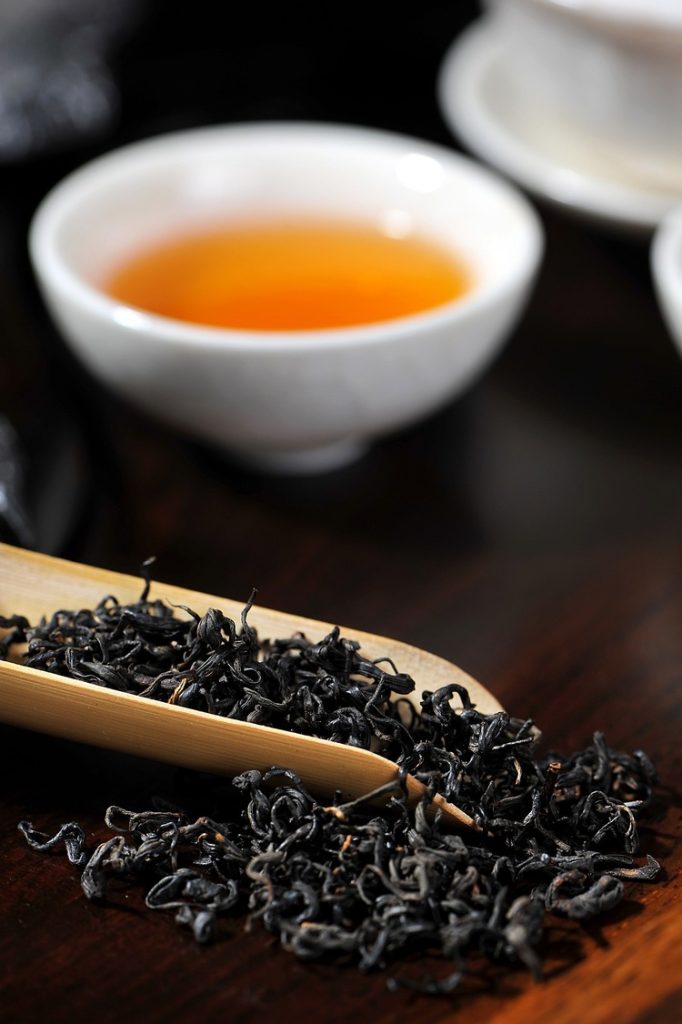
Black Tea’s Arrival in England
British East India Company and its Role in the Tea Trade
The British East India Company was pivotal in introducing black tea to England. Established in 1600, the company was granted a monopoly on British trade with the East Indies, including China. Recognizing the growing demand for tea in Europe, the company sought to capitalize on the lucrative trade by actively participating in the tea industry.
The British East India Company established trading posts in China, primarily in Canton (now Guangzhou), where they engaged in the tea trade. They procured black tea from Chinese merchants and transported it to England on their trading ships, ensuring a steady supply of this sought-after commodity.
Introduction and Adoption of Black Tea in England
Black tea arrived in England during the late 17th century, gradually gaining popularity among the English population. At first, tea was considered a luxury item reserved for the upper classes due to its high price. The aristocracy and affluent households were the first to embrace the beverage, appreciating its exotic nature and distinct flavors.
As the British East India Company expanded its trading operations, the availability of black tea increased, making it more accessible to a broader range of consumers. Tea consumption growth was facilitated by the establishment of tea shops, where people could enjoy a cup of tea and socialize.
Tea Becoming a Staple Beverage in British Society
Over time, the consumption of black tea spread across all segments of English society, becoming an integral part of daily life. Serving tea in social gatherings became customary, and tea-drinking rituals and etiquette evolved.
The demand for black tea grew exponentially, prompting the British East India Company to focus more on tea production. They established tea plantations in British colonies, particularly in India, to meet the increasing demand. This development significantly impacted the global tea industry and reinforced England’s position as a significant player in the tea trade.
Tea eventually became a staple beverage in British society. The ritual of afternoon tea emerged, providing an opportunity for people to gather and enjoy tea accompanied by sandwiches, cakes, and pastries. Tea became deeply ingrained in British culture, shaping social interactions and influencing the development of tea-related traditions.
The arrival and adoption of black tea in England had a lasting impact on the country’s history and cultural practices. The British fondness for tea has endured through the centuries, symbolizing British identity and a beloved national drink. The legacy of black tea’s arrival in England continues to shape tea-drinking customs and rituals today.
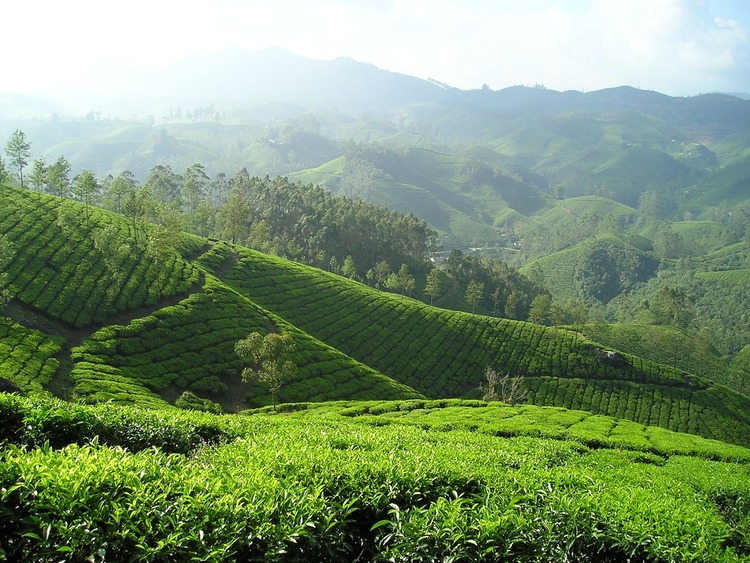
Black Tea Production in India
Expansion of Tea Cultivation to India
Expanding black tea production to India was a significant milestone in the global tea industry. The British, who had a strong affinity for tea, sought to break the Chinese monopoly on tea production and find a way to cultivate tea outside of China. Their efforts led to the discovery of suitable tea-growing regions in India.
In the early 19th century, the British East India Company initiated tea cultivation in India. Robert Bruce, a Scottish adventurer, discovered wild tea plants growing in the Assam region, now part of northeastern India. This discovery sparked interest in cultivating tea on a commercial scale in India.
Establishment of Tea Plantations in Assam and Darjeeling
The British recognized the potential of Assam for tea cultivation and established the first tea plantations in the region. Assam’s rich and fertile soil and favorable climate and rainfall provided ideal conditions for growing tea. Tea cultivation in Assam gained momentum, and large-scale plantations were established.
Another region that gained prominence in Indian tea production was Darjeeling, located in the foothills of the Himalayas. The British discovered that the unique terroir of Darjeeling, with its high-altitude slopes, misty climate, and distinct soil composition, produced teas with exquisite flavors and aromas. Darjeeling teas soon gained recognition for their delicate and muscatel-like characteristics.
Growth of the Indian Tea Industry and its Contribution to Black Tea Production
The establishment of tea plantations in Assam and Darjeeling marked the beginning of the Indian tea industry. The British encouraged the production of black tea in India to meet the growing demand domestically and in Europe. The Indian tea industry flourished as tea plantations expanded across the regions, focusing on cultivating varieties suitable for producing black tea.
The production of black tea in India increased, and it soon became one of the world’s largest exporters of black tea. Indian black teas gained recognition for their robust flavors, malty notes, and distinct regional characteristics. Assam black teas, known for their bold and robust profiles, became popular breakfast teas, while Darjeeling black teas, with their delicate and nuanced flavors, appealed to tea connoisseurs.
The Indian tea industry’s contribution to black tea production has been immense, shaping the global market. Today, India remains one of the leading producers and exporters of black tea, with Assam and Darjeeling teas being highly regarded and sought after by tea enthusiasts worldwide.
The expansion of black tea cultivation to India not only diversified the sources of black tea but also provided economic opportunities and transformed the social fabric of the regions involved. The Indian tea industry plays a vital role in the global tea trade, showcasing the country’s rich tea heritage and contributing to the enjoyment of black tea worldwide.

The Rise of Ceylon (Sri Lanka) as a Tea-Producing Region
British Influence in Ceylon and Encouragement of Tea Production
During the 19th century, Ceylon, now known as Sri Lanka, underwent a transformation that would make it one of the world’s leading tea-producing regions. The British, who colonized Ceylon, recognized the island’s potential for agriculture and sought to cultivate crops that could be exported back to Britain. Coffee was initially the primary cash crop, but a devastating disease called coffee rust decimated the plantations.
In the face of this crisis, the British turned their attention to tea. They saw the success of tea cultivation in India and believed Ceylon’s climate and geography could make it an ideal location for growing tea. The British encouraged and supported the transition from coffee to tea, providing incentives and expertise to local farmers.
Transformation of Ceylon into a Major Tea-Producing Region
The transformation of Ceylon into a central tea-producing region was a gradual process. The British established experimental tea gardens and introduced Camellia sinensis tea plants from India and China. These efforts paved the way for the large-scale cultivation of tea in Ceylon.
The highlands of Ceylon, with their cool temperatures, misty climate, and fertile soil, proved ideal for growing tea. The plantations expanded rapidly, and by the late 19th century, Ceylon had become one of the world’s leading tea exporters.
Notable Black Teas from Ceylon and Their Characteristics
Ceylon black teas are known for their distinct flavors and characteristics, influenced by the island’s unique terroir. The teas produced in different regions of Ceylon have their distinct profiles:
- Uva: Uva tea is grown in the eastern region of Ceylon and is highly prized for its bright liquor, floral aroma, and brisk, full-bodied flavor.
- Nuwara Eliya: Teas from the Nuwara Eliya region, located in the central highlands, have a delicate and fragrant profile with subtle floral and fruity notes. They are often referred to as the “Champagne of teas.”
- Dimbula: Dimbula teas, cultivated in the western highlands, are known for their mellow and well-rounded flavors, often exhibiting hints of citrus and a balanced astringency.
- Kandy: Kandy teas, grown in the central region, offer a bold and robust flavor with a coppery infusion. They are frequently used in blends and are popular as an intense breakfast tea.
The rise of Ceylon as a tea-producing region brought economic prosperity to the island and established its reputation as a quality tea origin. Ceylon black teas are revered and enjoyed for their diverse flavors, captivating aromas, and consistent quality.
The tea industry in Ceylon has become an integral part of the country’s heritage, contributing to its cultural identity and providing tea enthusiasts worldwide with an exceptional tea-drinking experience.

Black Tea Production in Kenya
Introduction of Tea Farming by British Settlers in Kenya
The history of black tea production in Kenya can be traced back to the early 20th century when British settlers recognized the region’s agricultural potential. Influenced by the success of tea cultivation in neighboring countries, such as India and Ceylon (Sri Lanka), the British saw an opportunity to establish tea plantations in Kenya.
British settlers began experimenting with tea farming in the highlands of Kenya, particularly in areas like Kericho and Nandi. The fertile soils, favorable climate, and high altitudes proved conducive to growing tea. The British brought tea plant varieties from India and Ceylon, laying the foundation for developing the Kenyan tea industry.
Kenya’s Emergence as a Significant Black Tea Producer
Kenya’s journey towards becoming a significant black tea producer gained momentum in the mid-20th century. The British colonial administration actively promoted tea cultivation, encouraging small-scale farmers and large-scale plantations to participate in the industry.
The Kenyan government also played a crucial role in supporting and expanding the tea sector. Initiatives were undertaken to provide technical assistance, improve infrastructure, and establish tea processing facilities. The government’s focus on diversifying the agricultural sector and reducing dependence on traditional cash crops further propelled the growth of black tea production.
Today, Kenya ranks among the top tea-producing countries in the world. The country’s tea industry has become a vital source of income, providing employment opportunities for thousands of workers and contributing significantly to Kenya’s economy.
Unique Characteristics of Kenyan Black Teas
Kenyan black teas are renowned for their distinctive characteristics, setting them apart from teas produced in other regions. The combination of Kenya’s terroir, climate, and tea plant varieties contributes to Kenyan black teas’ unique flavors and profiles.
One notable feature of Kenyan black teas is their bright and vibrant liquor, often exhibiting a reddish or amber color. They possess a bold and robust flavor, a rich, malty undertone, and a hint of brightness. Kenyan teas are known for their briskness and full-bodied nature, making them an excellent choice for breakfast teas and blends.
The high elevations at which tea is cultivated in Kenya impart a unique crispness and a refreshing quality. This and the region’s ample sunlight and fertile soils contribute to the teas’ exceptional quality and complexity.
Kenyan black teas have gained recognition and popularity globally, often used in blends or enjoyed as single-origin teas. They have become a favorite among tea enthusiasts, admired for their robust flavors, briskness, and ability to hold up well with milk and sweeteners.
The growth of black tea production in Kenya has transformed the country’s agricultural landscape and positioned it as a significant player in the global tea industry. Kenyan black teas continue to captivate tea drinkers worldwide with their distinct character and exceptional quality, cementing Kenya’s reputation as a noteworthy origin for black tea.

Expansion of Black Tea Production to Other Countries
Diversification of the Global Black Tea Market
The global black tea market has witnessed significant diversification as tea production expanded to various countries beyond its traditional origins. While black tea originated in China and later spread to India and Sri Lanka, its cultivation has now extended to several other regions across the globe. This diversification has broadened the availability of black tea and enriched the global tea market with a wide range of flavors and profiles.
Black Tea Production in Indonesia, Vietnam, Nepal, and Other Regions
Indonesia has emerged as a notable black tea producer, primarily known for its robust and bold teas. The volcanic soils and favorable climate in regions like West Java and Sumatra provide ideal conditions for tea cultivation. Indonesian black teas often exhibit earthy flavors with hints of spice and have gained recognition in the international market.
Vietnam, too, has made significant strides in black tea production. With its large-scale tea plantations and favorable weather conditions, Vietnam has become one of the world’s largest black tea exporters. Vietnamese black teas are known for their briskness, full-bodied nature, and distinctive aroma, making them popular among tea enthusiasts.
Nepal, nestled in the Himalayas, has also carved a niche for itself in the black tea industry. The high-altitude tea gardens in regions like Ilam and Dhankuta produce unique teas with delicate flavors and floral notes. Nepalese black teas have gained acclaim for their exceptional quality and are highly regarded by tea connoisseurs.
Apart from these countries, black tea production has expanded to regions such as Malawi, Zimbabwe, and Argentina, among others. Each of these regions contributes to the global black tea market with its flavors, characteristics, and culture.
Impact on Global Tea Consumption and Cultural Practices
The expansion of black tea production to other countries has profoundly impacted global tea consumption patterns and cultural practices. It has diversified the tea market, offering consumers a wide array of choices in terms of flavors, aromas, and regional specialties. This has led to a greater appreciation for the nuances and diversity of black teas worldwide.
The availability of black tea from different regions has also influenced cultural practices and rituals surrounding tea consumption. Tea-drinking traditions, brewing techniques, and preferences for milk, sugar, or other additives vary across countries and regions. Introducing black teas from new origins has enriched these practices, fostering cross-cultural exchanges and creating opportunities for exploring and appreciating different tea styles.
Moreover, the expansion of black tea production to other countries has contributed to the economic development of these regions. Tea cultivation provides employment opportunities, boosts local economies, and enhances the livelihoods of farmers and workers involved in the tea industry.

Significance of Black Tea in Various Cultures
Black tea has played a significant role in various cultures around the world. Here are some examples:
China
In China, black tea is known as “red tea” because it is reddish-brown when brewed. It is often served during special occasions like weddings and business meetings. Black tea is also a popular choice for breakfast, and it is believed to aid digestion. In addition, black tea is used in traditional Chinese medicine to treat various ailments, including headaches and low energy.
India
In India, black tea is a staple beverage. It is often served with milk and sugar and is known as “chai.” Chai is a popular drink throughout the country and is often consumed in the morning and afternoon. It is also used in Ayurvedic medicine to treat various conditions, including digestive problems and anxiety.
United Kingdom
Black tea is an integral part of British culture. It is often served with milk and sugar and consumed throughout the day. Afternoon tea, a tradition from the 19th century, typically includes black tea, sandwiches, and pastries. Black tea is also used in various British dishes, such as tea-infused cakes and puddings.
United States
Black tea is a popular beverage in the United States, often consumed in the morning or afternoon. It is also used in recipes such as iced tea and tea-infused cocktails. In addition, black tea is believed to have health benefits, such as reducing the risk of heart disease and stroke.
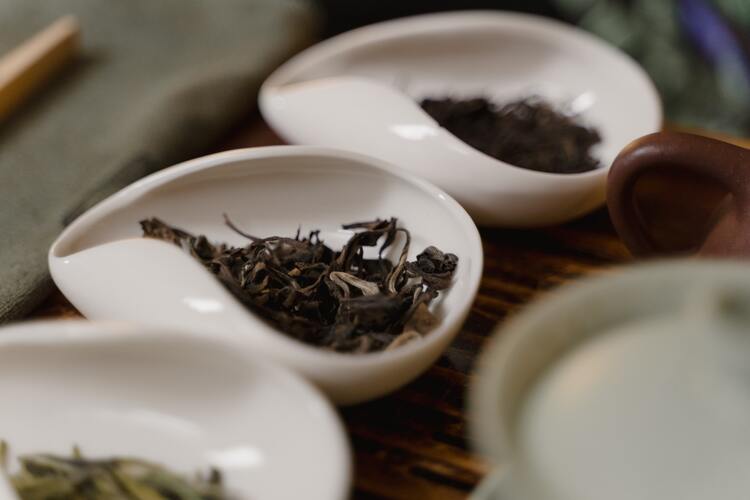
Black tea remains a beloved and cherished beverage, offering moments of solace, connection, and indulgence. Its rich aroma, robust flavors, and diverse profiles bring joy to tea lovers across the globe.
Whether enjoyed in a traditional tea ceremony or as a comforting cuppa at breakfast, black tea leaves an enduring impression on our palates and lives.
I hope you have enjoyed the article about the history of black tea and learned something new!
How well-versed are you in the history of black tea?
More About Black Tea
The Process of Making Black Tea
What Does Black Tea Taste Like?
What Does Assam Tea Taste Like?